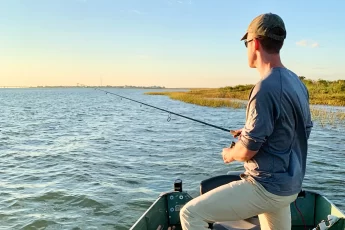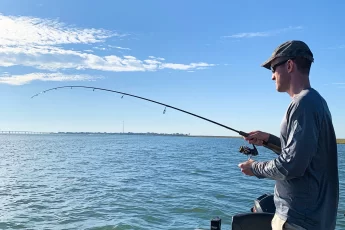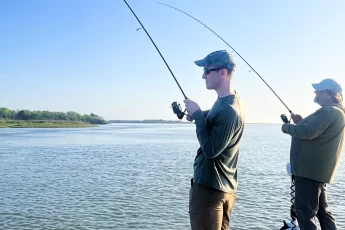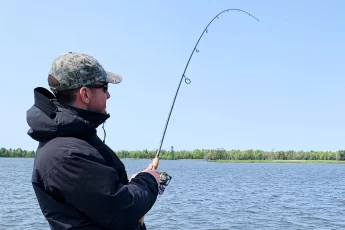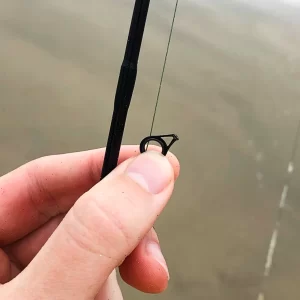
Welcome to our comprehensive guide on fishing rod care and repair, where we delve into the crucial aspects of maintaining your fishing gear for optimal performance and longevity. Fishing rods, while incredibly strong for their light weight, are surprisingly susceptible to damage. This guide is designed to equip you with the knowledge to prevent common forms of damage, such as accidents, misuse, and natural wear, and to address them effectively when they occur.
Through careful handling, routine maintenance, and timely repairs, you can significantly extend the life of your fishing rod. Make sure to protect your investment and enhance your fishing experience by properly taking care of your rods.
*Disclosure: I only recommend products I would use myself and all opinions expressed here are my own. This post may contain affiliate links that at no additional cost to you, I may earn a small commission.
Table of Contents
- Most Common Ways Fishing Rods Break and How to Avoid Them
- Routine Rod Maintenance Tips
- Storage and Transportation
- Repairing Common Rod Issues
- Conclusion
- Frequently Asked Questions
Most Common Ways Fishing Rods Break and How to Avoid Them
Fishing rods, despite their resilience, are prone to damage through accidents, misuse, and natural wear. Understanding and preventing the most common causes of rod breakage is essential for every angler. From the frustration of snapping a rod in a car door to battling the gradual toll of saltwater corrosion, this guide outlines key strategies to protect your gear. We’ll cover everything from avoiding mishaps to maintaining your rod against the elements, helping ensure your fishing adventures are never cut short by avoidable damage. Let’s dive into practical tips for keeping your rod intact and ready for action.
Accidents and Mishandling
- Description: Arguably one of the most common and most frustrating ways anglers break fishing rods is via simple accidents or moments of carelessness. Common scenarios include closing the rod in a car door, tailgate, stepping on the rod, or placing it in a precarious position where it can easily fall or be knocked over. These unfortunate mistakes can lead to sudden, often irreparable damage to the rod, especially to its more delicate components like the tip.
- Prevention: The key to preventing such accidents lies in developing and adhering to careful handling and storage habits. Always double-check the location of your rod before closing doors or tailgates. Make it a habit to store the rod in a secure, designated spot away from high traffic areas, especially when in a vehicle or at home. Utilizing rod sleeves and protective cases can provide an additional layer of safety during transport or storage. Furthermore, when setting the rod down, choose a flat, open area away from feet and potential hazards. Finally, investing in a rod rack for your vehicle or home can greatly reduce the risk of these types of accidents by keeping rods organized and securely in place.
High-Sticking
- Description: High-sticking occurs when the rod is bent into an extreme arc, usually more than 90 degrees. Imagine the rod tip pointing straight up in the air and a fish pulling directly straight down. This puts excessive stress on the tip portion of the rod which can lead to breakage.
- Prevention: Keep the rod at a lower angle during the fight with a fish, ensuring the stress is distributed along the entire length of the rod. Keeping a lower drag setting can ensure that the spool will release line before the tension is high enough from an accidental high sticking event to avoid a broken rod.
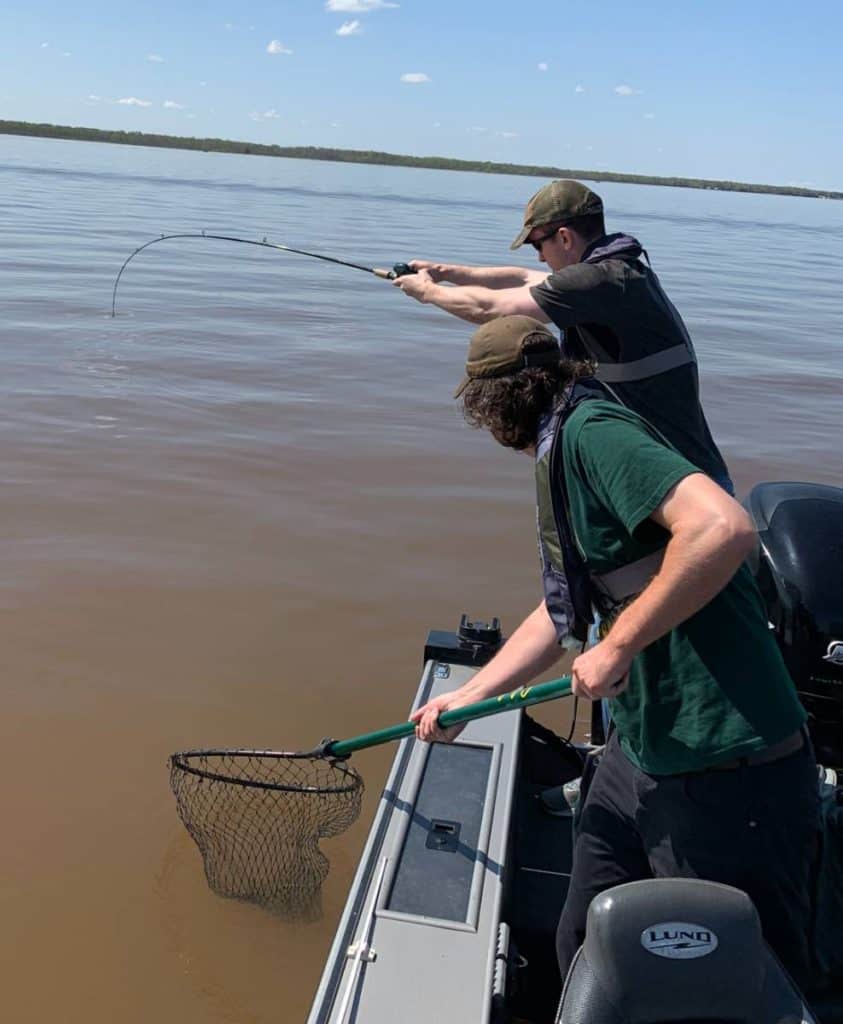
Overloading
- Description: Using a fishing rod to cast baits or lures heavier than what the rod is rated for can overload the rod, causing it to snap. Similarly, trying to lift a heavy fish directly out of the water without assistance can break the rod.
- Prevention: Adhere to the rod weight specifications for casting and avoid lifting fish directly out of the water with the rod. We love boat flipping fish in the heat of the moment here at Juran Adventures but make sure your rod has enough backbone to handle the weight of the fish. Boat flip fish in one smooth action. When in doubt, use a net to boat fish.
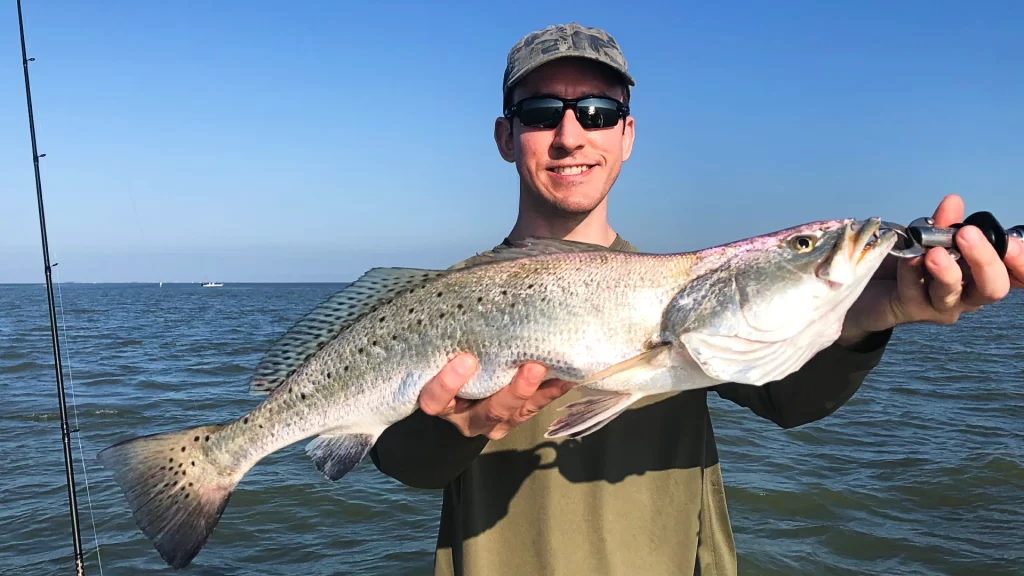
Impact Damage
- Description: Accidental knocks or drops can cause unseen damage to the rod’s structure, leading to weak spots. These weakened areas may later break under normal use. This is especially the case with graphite rod blanks. This failure mode is especially frustrating because the angler may damage the rod blank during transport then the rod finally fails in the middle of fighting a big fish.
- Prevention: Handle rods carefully, avoid banging them against hard surfaces, and use protective cases for storage and transport. Rod socks are a cheap option to help avoid scuffs and nicks.
Snags or Trapped Line
- Description: Underwater snags or accidentally trapped line are common occurrence when fishing, especially when utilizing bottom fishing techniques like jigging. Pulling too hard to free a snag or casting with the line trapped can apply uneven pressure and snap the rod.
- Prevention: Regularly check the line and guides to ensure the line moves freely and carefully manage snags to avoid sudden jerks. Ensure the drag is loose enough so the spool will release line instead of your rod breaking in these situations. Pro tip if you are REALLY snagged – point the rod tip directly at the snag. Then try to pull the snag free while holding the spool so that no line will be released. This method will induce the maximum pull on the snag and ensure that your line will break instead of your rod.
Wear, Tear, and Corrosion
- Description: Regular use of a fishing rod, especially in harsh conditions like saltwater environments, can lead to wear and tear as well as corrosion over time. Saltwater is particularly corrosive and can damage both the rod and its components if not properly maintained. Corrosion can affect the rod guides, reel seat, and any metal parts, leading to weakened structures and eventual failure. In addition to the physical wear from casting, retrieving, and fighting fish, the cumulative effect of salt, sun, and the elements can degrade the rod’s materials, including the blank, guides, and handle.
- Prevention: To combat wear, tear, and saltwater corrosion, it is crucial to adopt a rigorous maintenance routine. Regularly inspect the rod for signs of corrosion or wear, particularly around the guides and reel seat. Periodically check for cracks, especially near the rod joints and ferrules, can help identify stress points that may be exacerbated by saltwater exposure before they lead to breakage. Also, choose saltwater rated rods that are built with corrosion resistant materials when picking a fishing rod.
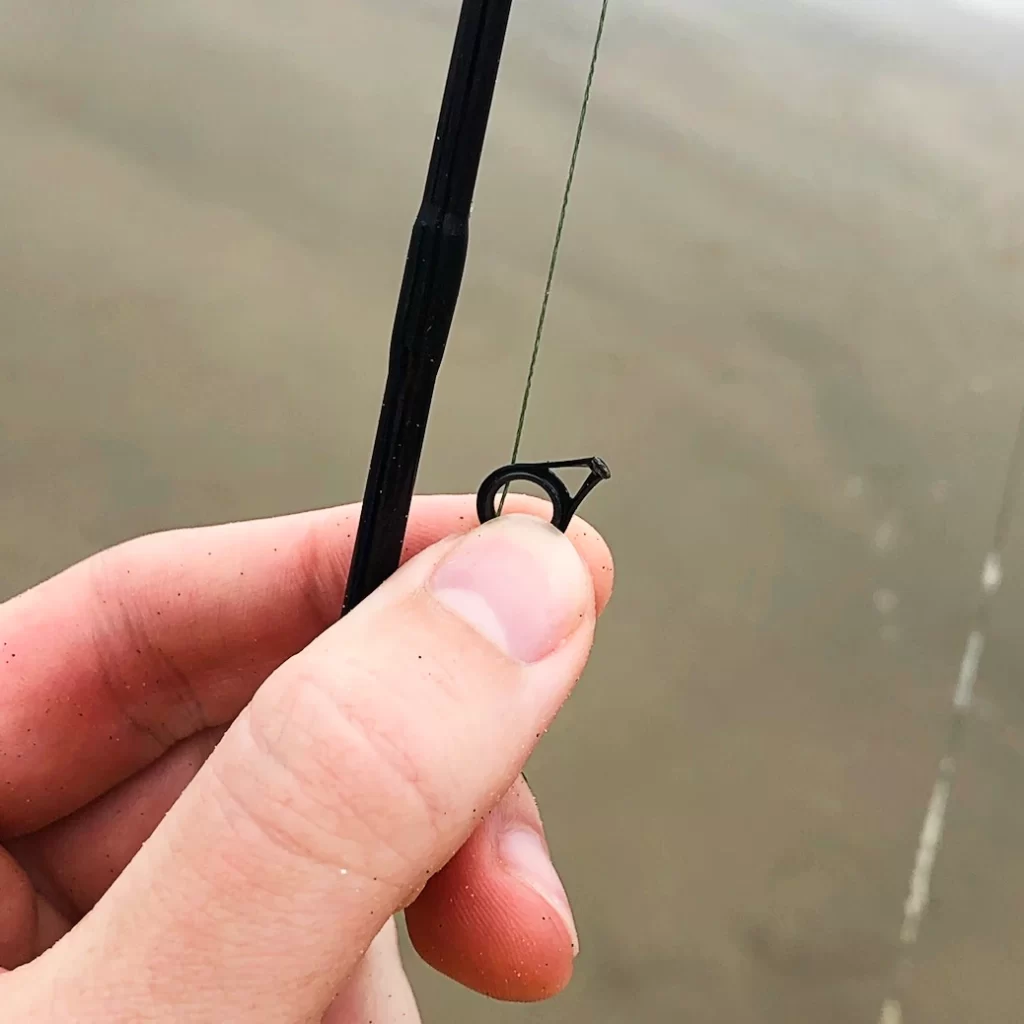
Improper Storage or Transportation
- Description: Bending, crushing, or warping can occur if the rod is stored or transported improperly, such as under heavy objects or in a bent position. A common example is laying your rods in the bed of a truck next to a cooler. On the way fishing, you need to slam on the brakes to avoid something on the road. Wham, the cooler just took out all your rods.
- Prevention: Use a rod tube or protective sleeve and ensure the rod is stored in a straight position away from heavy objects.
Improperly Set Drag
- Description: The drag system on a reel is designed to let out line smoothly when a fish pulls hard enough to risk breaking the line or rod. Setting the drag too tight can prevent the reel from releasing line when needed, putting excessive pressure on the rod. This can lead to a situation where the rod is subjected to more force than it can handle, potentially causing it to snap.
- Prevention: Before starting to fish, ensure the drag is set correctly for the line strength and rod rating you are using. A general rule of thumb is to set the drag to approximately one-third to one-half of the breaking strength of the line. It’s also a good idea to test the drag by pulling on the line directly above the reel to feel how much pressure it takes to release line. Setting a lighter drag is the single best way to avoid most rod breakage incidents while actually out fishing. If the reel releases line before the rod blank is overstressed, it is nearly impossible to accidentally break the rod.
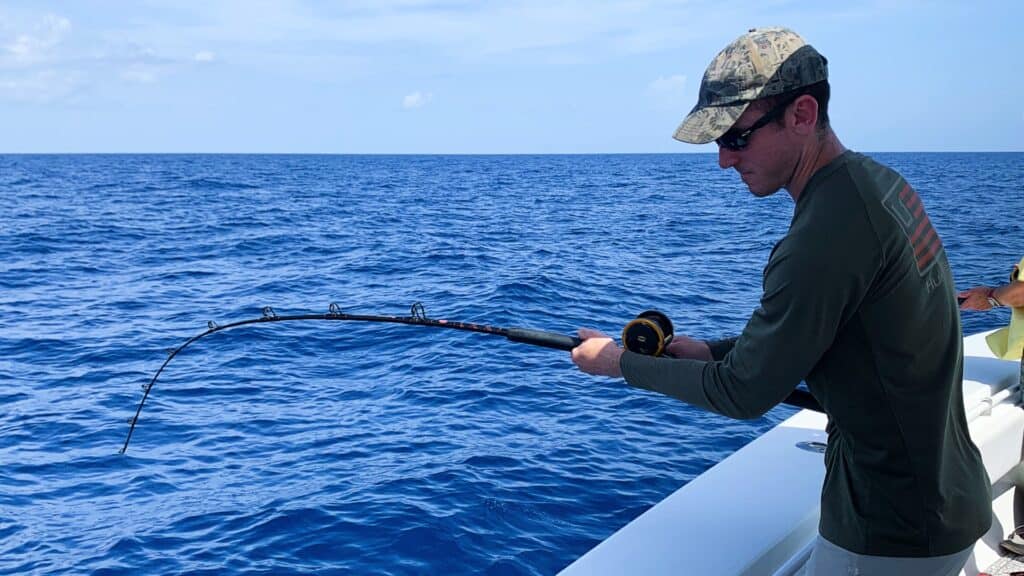
A common scenario where I’ve seen anglers accidently break their line is when pier fishing they put their brand new surf rod in a rod holder with the drag maxed out. A big fish like a bull red or a shark grabs their bait and pulls like a freight train, immediately snapping their rod (or in lucky outcomes, just breaks their line).
Manufacturing Defects
- Description: Occasionally, a rod may break due to flaws in materials or the manufacturing process, such as air bubbles in the blank or improperly cured materials. Unfortunately, these types of failures may be impossible to catch beforehand. While most reputable rod manufacturers make great quality gear, this failure mode reinforces why it’s nice to have a solid warranty. We’ve had great luck with St. Croix’s warranty program over the years.
- Prevention: Purchase rods from reputable manufacturers and inspect new rods carefully for any signs of defects. Pick rods with warranty periods. This peace of mind is one reason to bump up in rod price point. More expensive rods usually have better warranty periods.
Routine Rod Maintenance Tips
Maintaining your fishing rod is not just about extending its lifespan; it’s about ensuring that every fishing trip is as successful and enjoyable as the last. Regular maintenance can prevent common issues and keep your rod in top condition. Here are some routine maintenance tips that every angler should follow:
Clean Your Rod After Each Use
- Why It’s Important: Salt, dirt, and grime can accumulate on your rod and cause wear over time. Saltwater, in particular, is corrosive and can damage both the rod and its components.
- How to Do It: Rinse your rod with fresh water after each use, especially if you’ve been fishing in saltwater. Use a soft, damp cloth to wipe down the rod, paying special attention to the guides, reel seat, and handle. For stubborn dirt, a mild soap solution can be used but be sure to rinse thoroughly afterward.
Inspect Your Rod Regularly
- Why It’s Important: Regular inspection can help you catch potential issues before they become major problems, such as cracks, splits, or wear in the rod, loose or damaged guides, and worn handles.
- How to Do It: Carefully examine the entire length of the rod for any signs of damage. Check the guides by running a cotton swab around the inside; if the cotton catches, there may be a nick or crack that can damage your line.
Protect the Guides
- Why It’s Important: Nicked guides can lead to line breakage. Completely broken guides affect how the line exerts pressure on the rod blank and significantly increases the odds of breaking the rod itself.
- How to Do It: Clean the guides with a soft cloth and mild cleaner, and ensure they are free of nicks and scratches. Use rod socks or rod storage tubes for transportation.
Handle and Reel Seat Care
- Why It’s Important: The handle and reel seat are where you interact with the rod the most, and keeping them clean ensures a comfortable grip and proper reel attachment.
- How to Do It: For cork handles, use a mild soap solution and a soft brush to remove dirt and oils from your hands. Rinse thoroughly and let dry. For foam handles, a damp cloth should suffice. Inspect the reel seat for corrosion or damage and clean it regularly to ensure the reel remains securely attached.
Store Your Rod Properly
- Why It’s Important: Improper storage can lead to bent rods, warped blanks, or accidental damage.
- How to Do It: Store your rod horizontally on a rack or vertically in a tube to avoid bending or warping. Ensure the storage area is dry and away from direct sunlight or extreme temperatures, which can degrade the materials over time.
Routine maintenance is the key to keeping your fishing rod in prime condition. By incorporating these simple steps into your fishing regimen, you can protect your investment and ensure that your rod is always ready for the next big catch. Remember, a well-maintained rod not only performs better but also significantly reduces the likelihood of equipment failure when you’re out on the water.
Storage and Transportation
Proper storage and transportation of your fishing rod are crucial for preserving its condition and ensuring it’s always ready for your next fishing adventure. Neglecting these aspects can lead to unnecessary wear, damage, or even the premature end of a rod’s usable life. Here are essential tips and practices for effectively storing and transporting your fishing rods:
Optimal Storage Solutions
- Why It’s Important: Correct storage helps avoid unnecessary damage.
- How to Do It:
- Use a Rod Rack: A rod rack is ideal for keeping your rods organized, secure, and off the ground, reducing the risk of accidental damage.
- Consider a Rod Sleeve or Tube: For additional protection, especially from dust and UV exposure, store your rod in a fabric sleeve or hard tube. This is particularly beneficial for graphite rods, which are more sensitive to UV degradation.
- Maintain a Controlled Environment: Store your rods in a cool, dry place away from direct sunlight and extreme temperatures, which can affect the rod’s materials and adhesives.
Safe Transportation Tips
- Why It’s Important: Transportation poses one of the biggest risks to fishing rods, as they can be easily damaged by bending, crushing, or impact.
- How to Do It:
- Use a Rod Case: For travel, a hard rod case offers the best protection against impact and pressure. Soft padded cases are a lighter, more flexible option for shorter trips or when space is a concern.
- Secure Rods in Vehicles: When transporting rods in a vehicle without a case, secure them to prevent movement. Specialized vehicle rod carriers can attach to SUVs, trucks, and cars, keeping rods parallel to the vehicle’s length and reducing the risk of damage.
- Break Down Rods When Possible: If your rod is multi-piece, disassemble it for transport to minimize its length and make it easier to protect. Ensure that each piece is secured and padded to prevent scratches or pressure points.
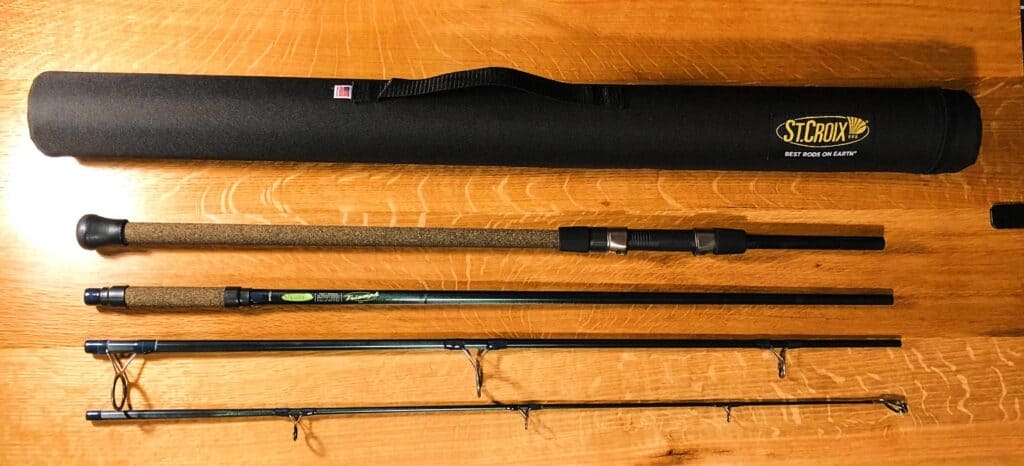
Additional Considerations
- Labeling and Identification: Especially for anglers with multiple rods, labeling your cases or tubes can quickly identify the contents, saving time and hassle on fishing trips.
- Regular Inspection: Before and after storage or transport, inspect your rod for any signs of damage or wear. Early detection can prevent minor issues from becoming serious problems.
Repairing Common Rod Issues
Even with utmost care, fishing rods can suffer from wear and damage over time. Understanding how to address common issues can save you time, money, and extend the life of your fishing rods. Here is a practical guide to repairing some of the most frequent problems encountered by anglers.
Fixing Broken Rod Tips
- Why It’s Important: The rod tip is one of the most vulnerable parts of your fishing rod, and a break here can significantly affect performance.
- How to Do It:
- Purchase a Replacement Tip: Find a tip that matches the diameter and size of your original rod tip.
- Remove the Broken Tip: Carefully heat the broken tip with a lighter or small torch to loosen the adhesive, then gently remove it.
- Attach the New Tip: Apply a small amount of rod tip adhesive to the end of the rod, then slide the new tip into place. Ensure it’s aligned with the other guides before the adhesive sets.
Replacing Damaged Guides
- Why It’s Important: Damaged or missing rod guides can lead to poor casting performance and line damage.
- How to Do It:
- Remove the Old Guide: Cut and peel off the thread wraps holding the damaged guide. Use a blade for precise cuts without damaging the rod.
- Prepare the New Guide: Position the new guide in the exact location of the old one, ensuring alignment with the other guides.
- Wrap the Guide: Secure the guide with new thread wraps. Coat the wraps with epoxy to protect them from water and wear.
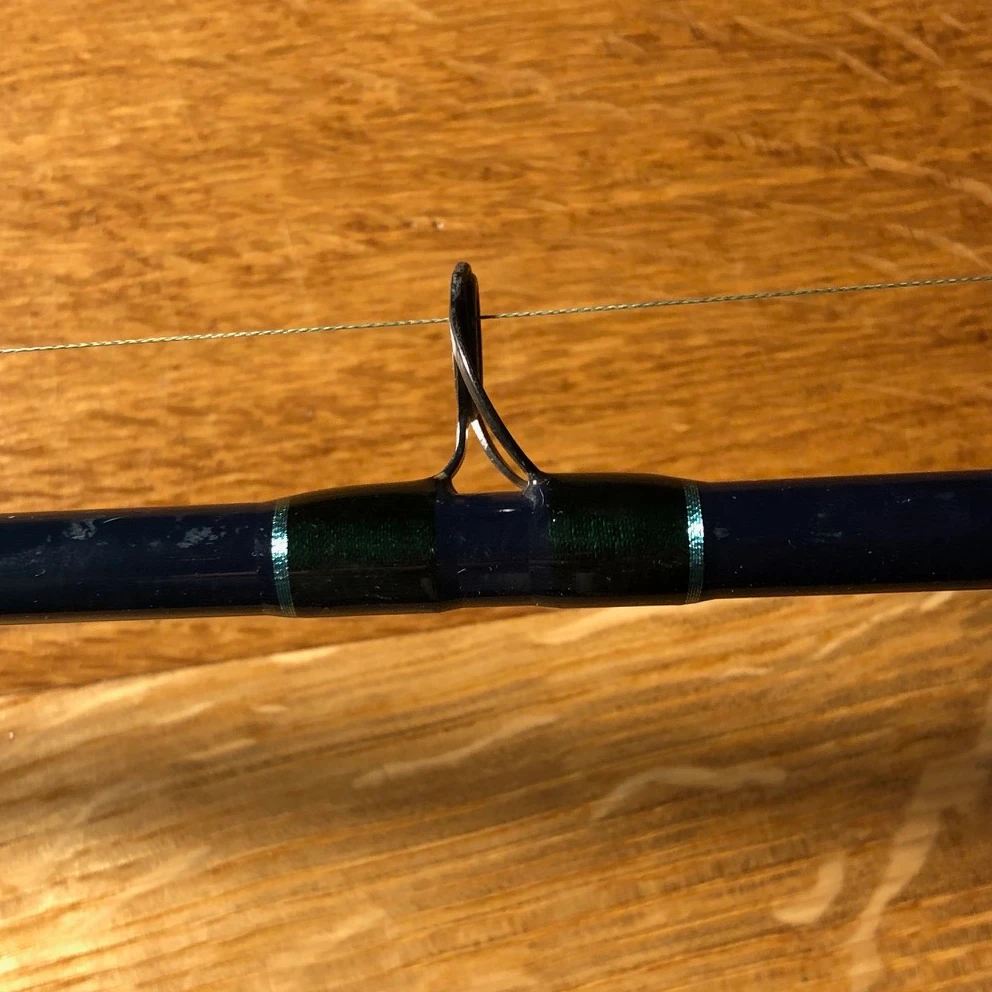
Repairing Cracks or Splits in the Blank
- Why It’s Important: A crack or split in the rod blank can lead to complete failure if not addressed promptly.
- How to Do It:
- Small Cracks: For minor cracks, reinforcing the area with rod wrapping thread coated in epoxy can be sufficient.
- Larger Damage: For more significant damage, a sleeve made from a similar material can be adhered over the damaged section. This process, known as splicing, requires precision and the right materials to maintain the rod’s action and strength.
Restoring Handles and Grips
- Why It’s Important: A comfortable and secure grip is essential for effective fishing.
- How to Do It:
- Cork Handles: Fill small holes or cracks with cork filler or mix some wood glue with cork dust. Sand the area smoothly after drying.
- EVA Foam: Damaged foam grips can be patched with waterproof, marine-grade adhesive. For significant damage, consider replacing the grip entirely.
While some repairs can be easily handled at home, it’s important to recognize when professional help is needed. High-quality rods or complex issues often require the expertise of a rod builder or repair specialist to ensure the repair is done correctly and safely. Whether you tackle repairs yourself or seek professional assistance, addressing issues promptly can keep your fishing rod in prime condition for many more successful outings.
Rod Repair Facilities
Some fishing stores offer rod repair services for a reasonable price. Fishing Tackle Unlimited is a popular fishing store near me that offers rod repairs. I’ve had them replace a rod tip before with minimal cost and a professional quality outcome. DIY rod repairs require a degree of skill and special supplies and for many anglers, a rod repair facility may be a better option.
Rod Warranties
Many rod breaks and failures unfortunately are not repairable. Rod warranties are a great back-up option that give excellent peace of mind for those incidents that render a rod unusable. Some beginner fishing rods priced at a budget price point may not come with much of a warranty to speak of whereas some high-end bass baitcasting rods may come with a 5 year or longer warranty.

Conclusion
In conclusion, effective rod care and repair are fundamental for every angler. This guide has equipped you with the knowledge to prevent damage, perform routine maintenance, and execute necessary repairs, ensuring your fishing rod remains a reliable tool on your angling adventures. Remember, the longevity of your rod is significantly influenced by your dedication to its care. By integrating these maintenance practices into your fishing routine, you not only protect your investment but also enhance your overall fishing experience.
Now that you know how to take care of your fishing rods, check out some of our most popular rod recommendation articles:
- Best Bass Baitcasting Rods
- Best Bass Spinning Rods
- Best Beginner Fishing Rods
- Best Inshore Rods
- Best Saltwater Fishing Rods
- Best Surf Fishing Rods
- Best Trolling Rods
- Best Ultralight Rods
- Best Walleye Rods
Frequently Asked Questions
How often should my fishing rod be cleaned?
It’s best to clean your rod after every outing, especially following saltwater exposure, to prevent salt buildup and corrosion. Rinse gently with freshwater to remove any salt and grime
What’s the optimal way to store a fishing rod?
Store your rod on a rack or in a protective tube, away from direct sunlight, to avoid bending or damage.
How to identify manufacturing defects in a new rod?
Check for any irregularities like uneven coatings, cracks, or misaligned guides upon purchase. Report any defects promptly to take advantage of the warranty.
Is repairing a broken rod tip something I can do on my own?
Yes, a broken rod tip can be easily replaced at home using a replacement tip and adhesive, making sure it aligns with the existing guides.
Handling damaged rod guides?
Replace damaged guides yourself if you’re comfortable with DIY repairs, or seek professional help for more complex issues.
Avoiding rod breakage during a big catch?
Prevent high-sticking by keeping the rod angled low to evenly distribute stress, and ensure the drag is set correctly to allow line release under tension.
Why are rod warranties important?
Warranties can cover manufacturing defects and certain damages, providing peace of mind and protection for your investment.
Can saltwater corrosion be reversed?
Once corrosion starts, it can’t be reversed, but further damage can be prevented with thorough cleaning and regular maintenance.
When to opt for professional rod repair?
Seek professional repair services for complex damage or when precision repairs are beyond personal expertise, to maintain the rod’s integrity.
Setting the correct drag on the rod?
The drag should be set to about one-third to one-half the breaking strength of your line, adjusted based on fishing conditions and target fish size. Regular testing and adjustment are key to optimal performance.

Written By: Andrew Juran
Andrew is a seasoned angler with over 25 years of experience fishing across the United States. He has caught hundreds of fish using various techniques and mentored many in the art of fishing. An advocate for sustainable fishing, Andrew is an active member of the Coastal Conservation Association, an organization committed to marine conservation.
For frequent fishing tips, behind-the-scenes looks, and real-time catches, connect with Andrew on Instagram


